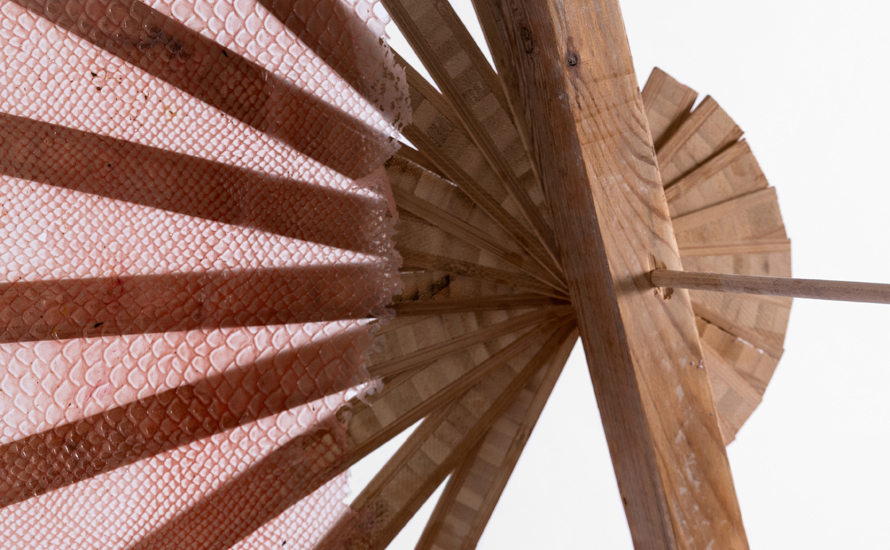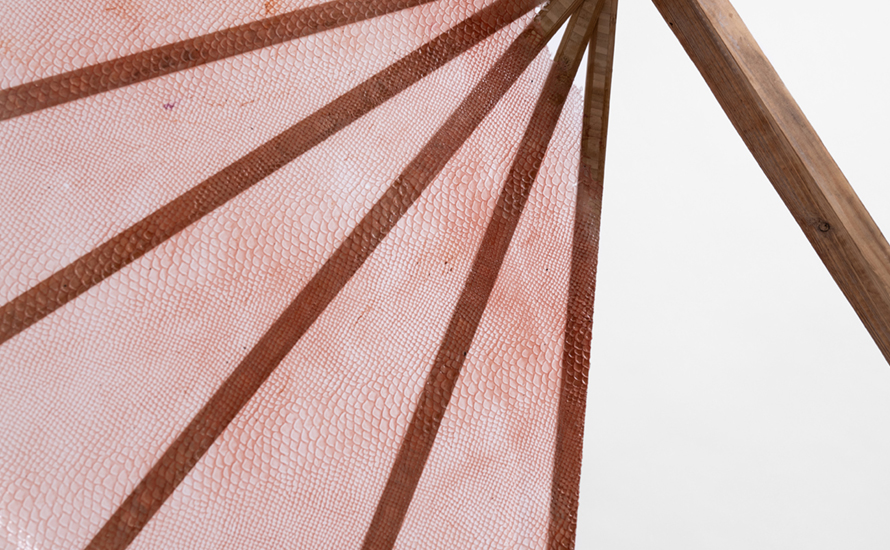Shirel Horovitz’s sculptural space is inhabited by memory-laden structures reaching toward new forms. Her sculptural practice is grounded in calculated deconstruction and reconstruction, not in an attempt to conceal or erase the origins of the parts, but rather, to transform them into working materials. Old wooden doorframes and furniture parts collected from the streets are made into new wholes – fragile yet present with a quiet force. Still carrying traces of memory, cultural context, and previous uses, each part preserves, embodies, and echoes human life stories. While their fractures and scars of use are evident, so is the persistent vitality pulsating within them. Thus, the private and the collective are interwoven. What once belonged to the intimate domestic sphere was cast into the street, becoming part of the urban landscape. Later collected and transformed in the studio, it emerged as something new, an object in its own right, a sculpture that no one but Horovitz could have conceived. The result is human-scale sculptures that dwell in the space between stability and collapse. Part structure, part self-supporting being, they meet the viewers’ gaze and invite them to wonder whether sculptural forms can hold complex emotions.
The meticulous treatment of the layered wood – sanding, cutting, gluing, and polishing – produces a uniform texture that preserves the material’s presence. At the same time, compositions emerge that contain a contradiction between order and deconstruction, reflecting the complexity of human existence as a multiplicity that cannot be reduced to a single definition, and manifesting the persistent tension between the personal-private and the collective.
The slightly surrealistic quality of the works welcomes us into an open field of possible readings. They do not offer clear figures or representations, but rather abstract forms that blur categorical boundaries. Yet, though abstract, they assert a presence and a distinct identity. They seem to possess a point of view and a will of their own. In other words, Horovitz moves us from asking “what is this?” to “who is this?”




